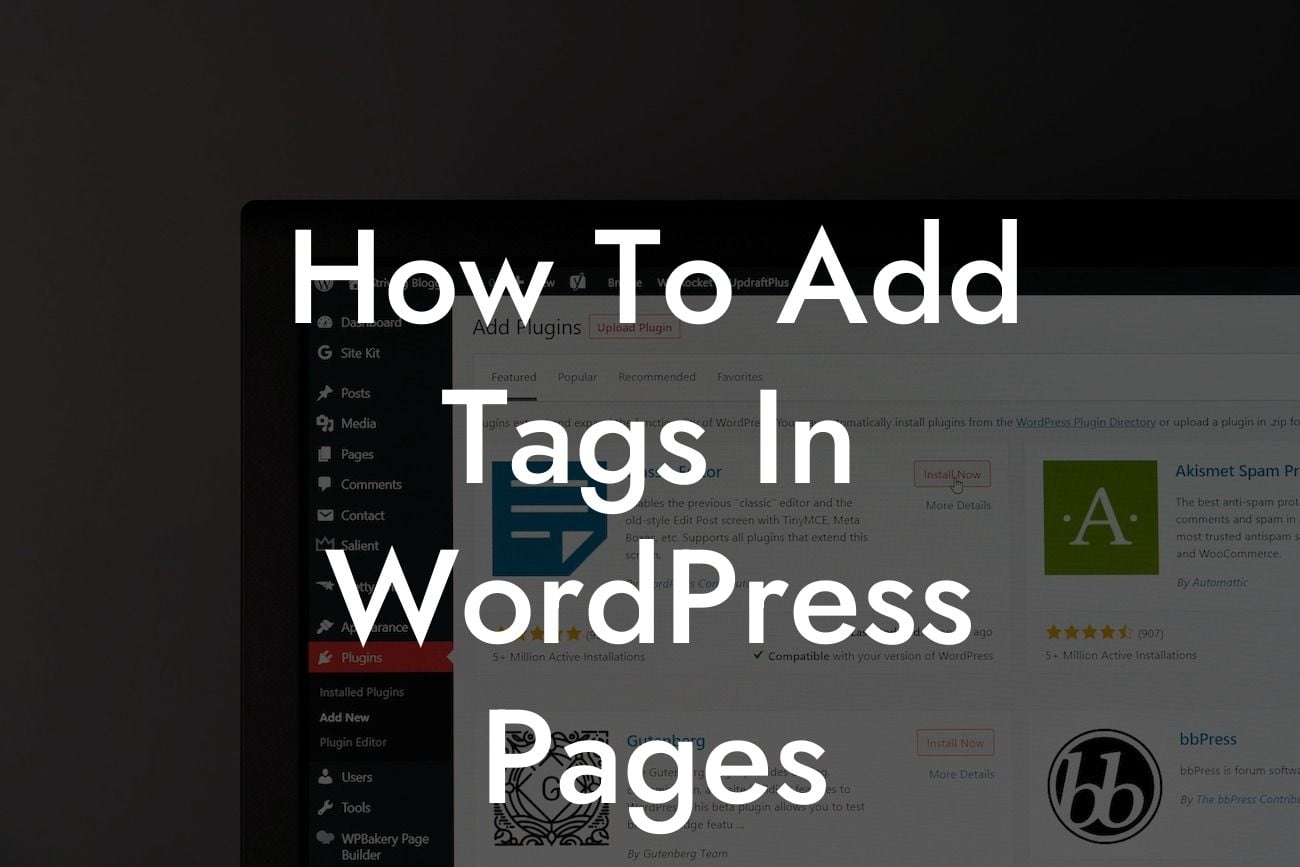Adding tags to your WordPress pages can make a remarkable difference in enhancing your website's visibility and boosting its search engine optimization (SEO). Tags serve as powerful tools to categorize and organize your content, making it easier for search engines and users to navigate through your site. In this comprehensive guide, we will walk you through the step-by-step process of adding tags to WordPress pages, helping you optimize your website for higher rankings and increased organic traffic.
Adding tags in WordPress is a simple yet vital aspect of optimizing your pages. To get started, follow these easy steps:
1. Understanding the Importance of Tags:
Tags offer a convenient way to group related content together. Search engines utilize these tags to better understand the context of your pages, improve user experience, and organize your site's content.
2. Installing a Suitable Tag Plugin:
Looking For a Custom QuickBook Integration?
Before adding tags, ensure that you have a reliable tag plugin. One popular option is the "Yoast SEO" plugin, which not only assists in tag management but also offers a range of valuable SEO features.
3. Accessing the Page Editor:
To add tags to a specific page, navigate to the WordPress dashboard and select "Pages" from the menu. Choose the page you want to optimize and click on "Edit" to access the page editor.
4. Adding Tags to Pages:
Within the page editor, locate the "Tags" section, usually positioned on the right-hand side. Enter relevant keywords or phrases that accurately describe the content of your page. Make sure to separate each tag with a comma.
5. Utilizing Relevant Keywords:
Tags should consist of keywords that reflect the content's main focus. Conduct thorough keyword research to identify the most appropriate and relevant keywords for each page. This will contribute to higher search rankings and better visibility.
6. Utilizing H2 and H3 Headings:
Include H2 and H3 headings throughout your content to ensure a clear structure and help search engines understand the hierarchical organization of your page. These headings should be optimized with relevant keywords.
How To Add Tags In Wordpress Pages Example:
Let's say you have a small business website specializing in outdoor gear. If you are creating a page about camping tents, relevant tags may include "camping tents," "outdoor camping," "tent reviews," and "camping equipment." By adding these tags, your page becomes more discoverable to search engines and users interested in camping gear.
Congratulations! You now possess the knowledge to effectively add tags in WordPress pages and optimize your website's SEO. By utilizing tags, you significantly improve your chances of attracting more organic traffic and reaching a broader audience. Don't forget to explore other insightful guides on DamnWoo and try out our exceptional WordPress plugins to unlock even more potential for your business. Share this article with others who might find it helpful, and let the journey to successful tag optimization begin!













